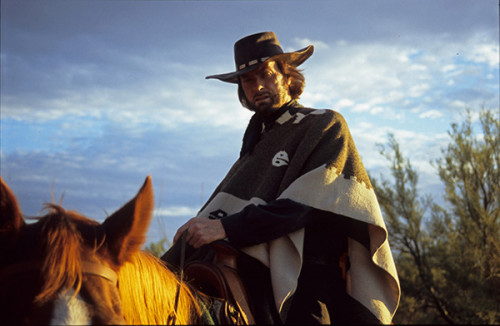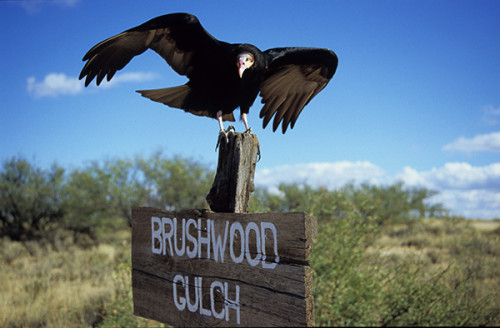The Wild and the West
 For more than a century, western films have awakened a yearning for wide-open country in audiences around the world. Many people are sure that they can immediately recognise the Wild West because of the movies, but it is an illusion: the nature on display in the westerns is far removed from reality.
For more than a century, western films have awakened a yearning for wide-open country in audiences around the world. Many people are sure that they can immediately recognise the Wild West because of the movies, but it is an illusion: the nature on display in the westerns is far removed from reality.
In movies, the river is sometimes just a day’s ride from the desert, when in reality the respective landscapes are thousands of miles apart. The water levels of the famed Rio Bravo have been so low for so long that the Colorado or San Juan rivers were traditionally used as stand-ins. If the landscape was too sparse, saguaro cacti were used to spice it up – whether they actually grow there or not. Almost every film is full of vultures, bison, mustangs and turkeys, but one rarely sees a pronghorn antelope: although they were one of the main sources of food for rangers and settlers at the time, the animals were airbrushed from movie history for financial reasons – probably because they were only ever seen from a distance and were therefore difficult to film.
The famous “Man with No Name”, the hero of innumerable westerns in the 1960s and 70s, rides through the countryside and this film, explaining the thought processes of the scriptwriters. The somewhat tongue-in-cheek hero is portrayed by Joe Dimmick, the world’s number one Clint Eastwood double for more than thirty years.
By the end of the film, Joe hopes that the audience is on his side: “Feel it? That urge to ride on and on, leave everything behind, follow the sun to where it goes down? Well, I tell you this: I reckon if you really want it you can still find the Old West anywhere!”
The original music was composed by Andy Baum, who also wrote a ballad that is performed by the American musician Lou Strebner. Written and directed by Manfred Christ and Harald Pokieser. A co-production of ORF, Discovery Channel USA and NDR Naturfilm, produced by Cosmos Factory.
The film received a Panda Award for Innovation at the British Wildscreen Festival in 2005, as well as other awards for “Best Camerawork” and “breaking boundaries” at festivals throughout Europe and Asia.
